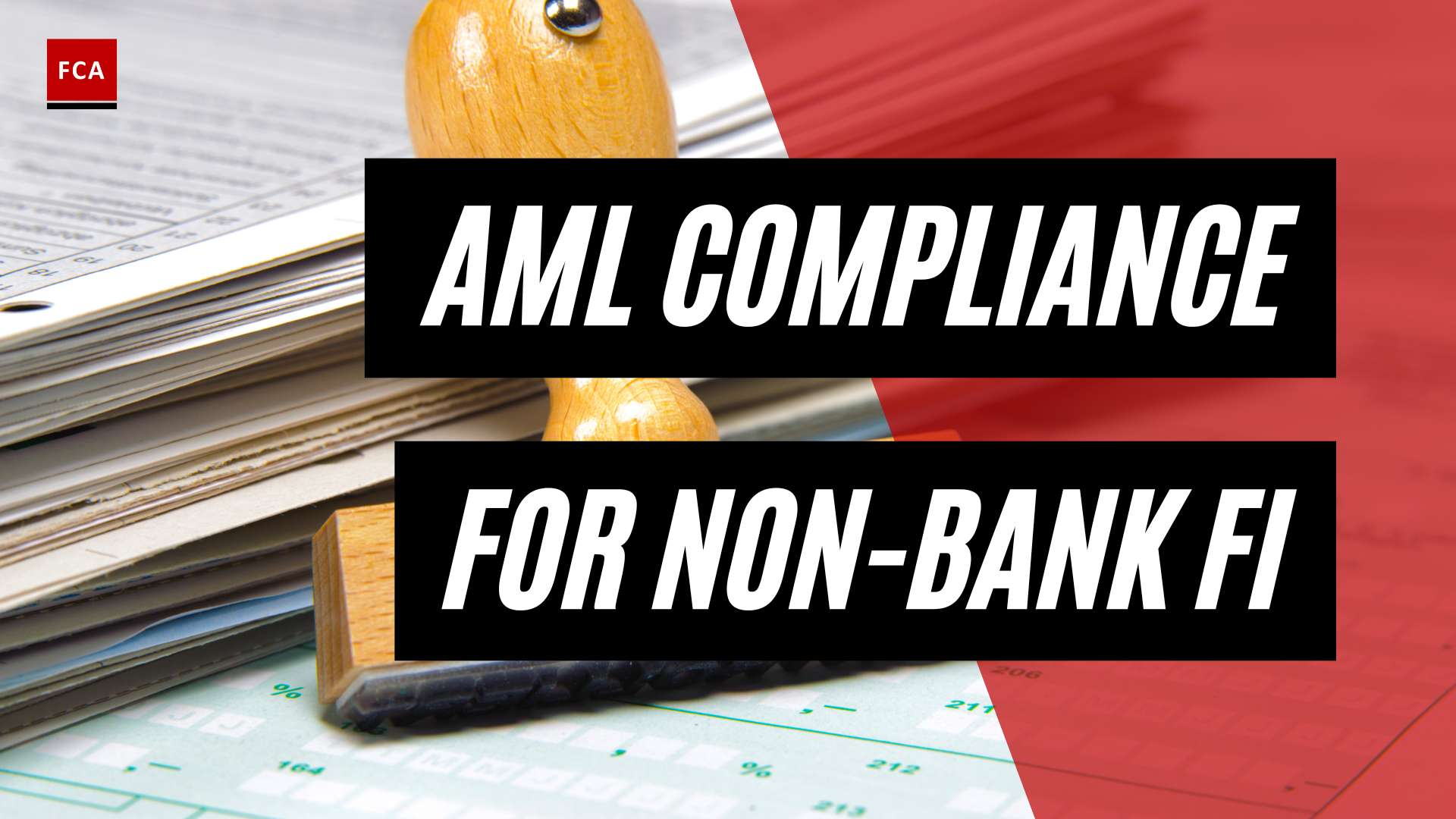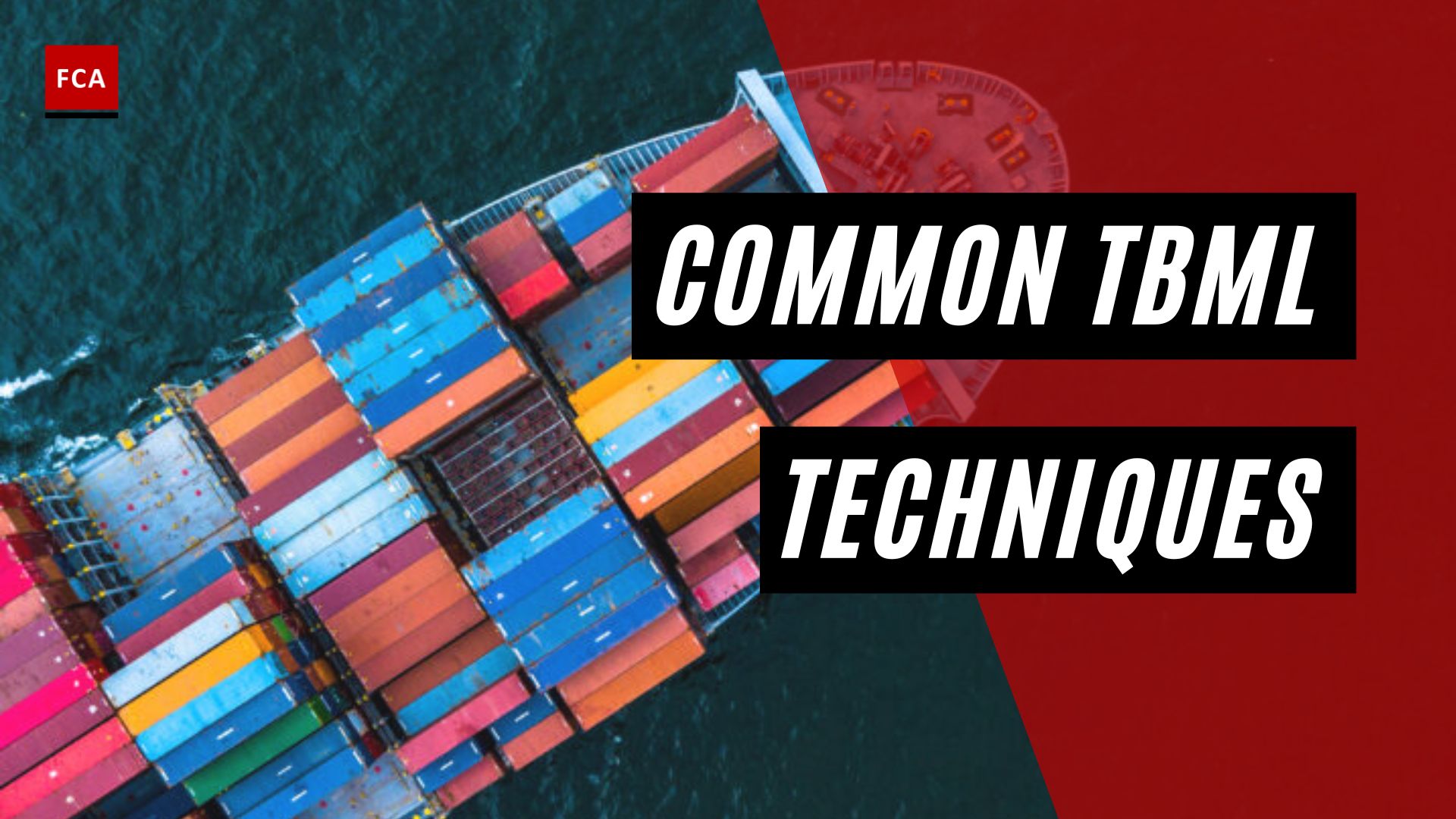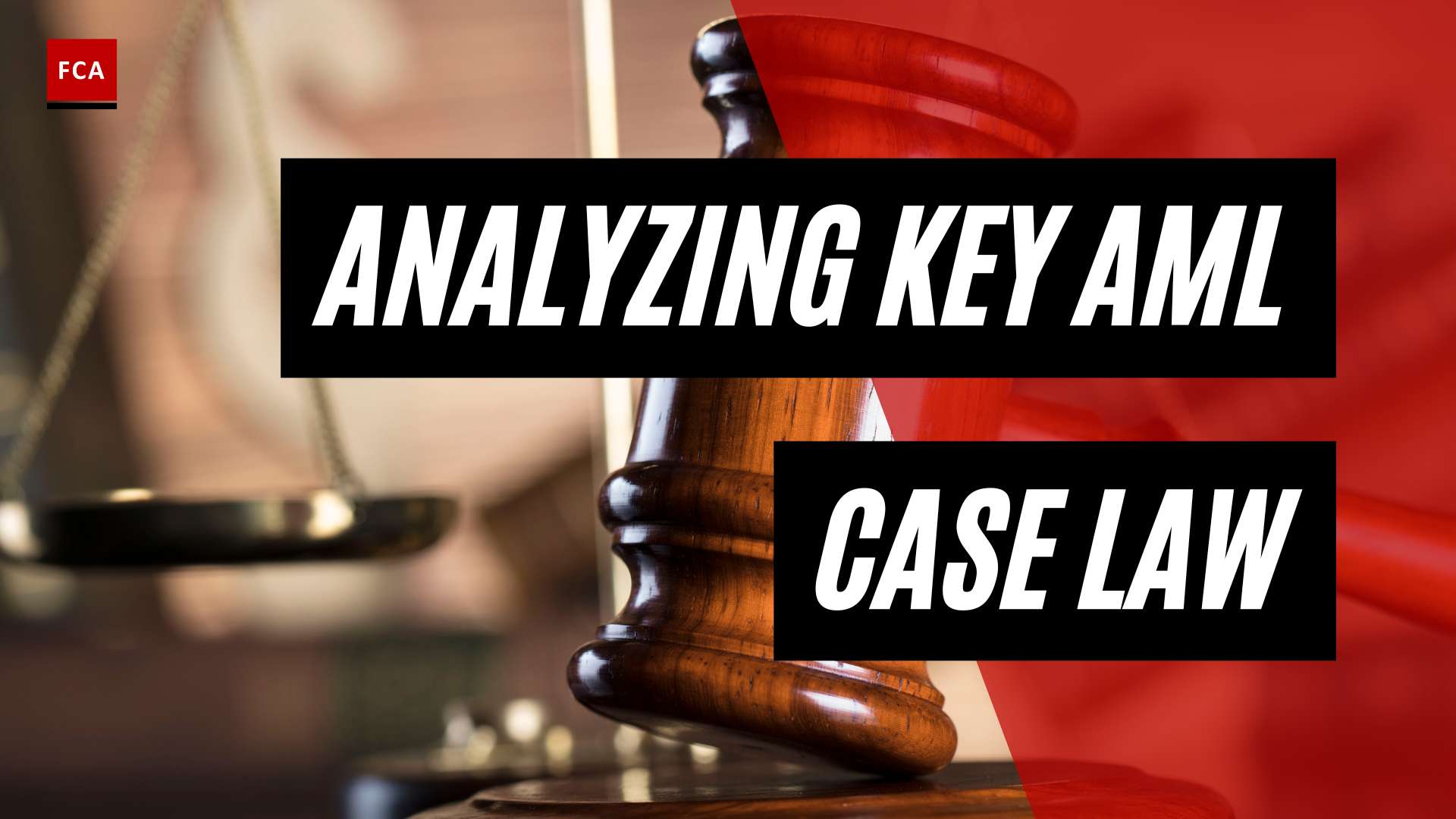Understanding AML Compliance Programs
To effectively combat money laundering and terrorist financing, financial institutions must have robust Anti-Money Laundering (AML) compliance programs in place. These programs consist of a set of rules and procedures designed to prevent and detect illicit financial activities. Various legislations, such as the Bank Secrecy Act, the USA Patriot Act, and the EU’s Fourth and Fifth Anti-Money Laundering Directives, have been introduced to regulate AML practices.
Key Components of AML Compliance Programs
A well-structured AML compliance program encompasses several key components that work together to ensure adherence to regulatory requirements and mitigate the risk of financial crimes. These components include:
-
Detection of Suspicious Activities: Financial institutions need to establish robust systems and controls to detect and report suspicious transactions and activities. This involves implementing advanced monitoring tools and technologies to identify potential money laundering or terrorist financing activities.
-
Comprehensive Policies and Procedures: Clear and comprehensive policies and procedures should be developed and implemented to guide employees in carrying out their AML responsibilities. These policies should cover customer due diligence, transaction monitoring, reporting obligations, and other essential aspects of AML compliance.
-
Risk Assessments: Conducting thorough risk assessments is a crucial component of an effective AML compliance program. Risk assessments involve identifying and evaluating the risks associated with the institution’s business, including products, services, customers, and geographic locations. This enables financial institutions to develop targeted risk mitigation strategies and allocate resources effectively (Source).
-
Implementing Know Your Customer (KYC) Programs: KYC programs are essential for verifying and understanding the identity and background of customers. By implementing KYC procedures, financial institutions can assess the potential risks associated with each customer and ensure compliance with regulatory requirements. KYC programs typically involve gathering customer identification information, conducting customer due diligence, and ongoing monitoring of customer activities. For more information on KYC regulations, refer to our article on know your customer (KYC) regulations.
Importance of Risk Assessments in AML Compliance
Risk assessments play a vital role in AML compliance programs. They provide financial institutions with a comprehensive understanding of the risks they face and enable the development of appropriate risk mitigation strategies. By conducting risk assessments, institutions can identify high-risk areas, such as certain customer segments, products, or geographic locations, and allocate resources accordingly.
Regulatory expectations require organizations to have a management commitment that establishes a tone at the top and sufficient compliance resources. Risk assessments help institutions align their policies, procedures, and internal controls with their risk appetite, ensuring a strong framework for AML compliance (Finscan).
Implementing Know Your Customer (KYC) Programs
One of the essential components of an AML compliance program is the implementation of robust KYC programs. KYC procedures involve thorough due diligence on customers to verify their identities and assess the risks they pose. Effective KYC programs enable financial institutions to prevent and detect money laundering and other illicit activities.
KYC programs typically involve the following steps:
-
Customer Identification: Financial institutions must establish the identity of their customers through reliable and independent sources of information. This includes obtaining official identification documents, such as passports or driver’s licenses, and verifying the information provided.
-
Customer Due Diligence: Financial institutions should conduct due diligence checks on their customers to assess their risk profiles. This involves gathering additional information about customers, such as their occupation, source of funds, and expected account activity.
-
Ongoing Monitoring: Continuous monitoring of customer activities is crucial to detect any suspicious transactions or changes in behavior. This includes regular reviews of customer accounts and transactions to ensure that they are consistent with the customer’s profile and expected activities.
Implementing effective KYC programs helps financial institutions comply with regulatory requirements and mitigate the risk of being used for money laundering or terrorist financing purposes. For information on AML compliance software that can aid in KYC processes, refer to our article on aml compliance software.
By understanding the key components of AML compliance programs, the importance of risk assessments, and the implementation of KYC programs, financial institutions can build robust defense mechanisms against money laundering and terrorist financing activities.
Auditing and Testing in AML Compliance
To ensure the effectiveness of Anti-Money Laundering (AML) compliance programs, auditing and testing play a critical role. These processes help organizations assess their adherence to AML regulations and identify any gaps or deficiencies that need to be addressed. In this section, we will explore the role of independent testing in AML compliance, conducting effective AML audits, and the importance of reporting and corrective actions.
Role of Independent Testing in AML Compliance
Independent testing, also known as audit, is a crucial component of a robust AML compliance program. It involves conducting assessments and evaluations by third-party organizations to provide an unbiased and objective analysis of an institution’s compliance efforts. These audits should be conducted every 12-18 months, or more frequently for institutions operating in high-risk areas (Flagright).
The selected third-party organization should possess the necessary qualifications and expertise to conduct a risk-based audit specific to the institution. The independence of the auditor is vital to ensure the integrity of the audit process. The audit should focus on evaluating the quality of risk management related to money laundering and terrorist financing risks, internal controls, and information technology systems and processes supporting the AML compliance program.
Conducting Effective AML Audits
When conducting AML audits, it is essential to tailor the audit approach to the institution’s size, risk profile, organizational structure, geographic diversity, and technology use. The audit should be risk-based, with a focus on areas of greatest risk and concern identified in the institution’s risk assessment. The objective is to assess the overall adequacy of the AML compliance program and compliance with regulatory requirements.
During the audit, auditors should evaluate internal controls, review information technology sources and systems, and assess processes supporting the AML compliance program. The scope, procedures, and findings of the audit should be thoroughly documented, and all documentation and workpapers should be made available for review by examiners.
Reporting and Corrective Actions
The findings of the AML audit, including violations, exceptions, or deficiencies, should be properly documented and reported to the board of directors or a designated committee. Timely reporting is crucial to ensure that corrective actions can be taken promptly. The board of directors or committee should track and document the corrective actions taken to address the identified issues.
Examiners play a role in reviewing the documentation of the independent testing and evaluating its adequacy. They assess the compliance program’s effectiveness, the independence and qualifications of those conducting the testing, and whether the testing adequately covers the risks associated with money laundering and terrorist financing. Examiners also review the reporting of violations, exceptions, deficiencies, and corresponding corrective actions to ensure timely reporting and appropriate documentation.
By conducting independent testing, institutions can gain valuable insights into the effectiveness of their AML compliance programs and identify areas for improvement. The audit process allows organizations to address any deficiencies promptly, mitigate risks, and demonstrate their commitment to complying with AML regulations. It is a crucial component in safeguarding the financial system from illicit activities.
In the next section, we will explore emerging trends in AML compliance, including combating trade-based money laundering with smart contracts and the national security considerations associated with AML compliance.
Emerging Trends in AML Compliance
As the landscape of financial crimes continues to evolve, it is crucial for anti-money laundering (AML) compliance professionals to stay informed about emerging trends and adapt their training programs accordingly. In this section, we will explore two important areas of focus in AML compliance training: combating trade-based money laundering (TBML) with smart contracts and national security considerations.
Combating Trade-Based Money Laundering (TBML) with Smart Contracts
Trade-based money laundering (TBML) poses significant challenges in the fight against money laundering. TBML involves the exploitation of international trade to disguise illicit funds and move them across borders. To address this issue, innovative approaches such as utilizing smart contracts have gained attention.
Smart contracts, which are self-executing contracts with the terms of the agreement directly written into code, have the potential to enhance transparency and accountability in trade transactions. By leveraging blockchain technology, smart contracts can automate and verify trade processes, reducing the risk of fraudulent activities and enhancing traceability.
Integrating TBML-focused training into AML compliance programs can help professionals understand the unique risks associated with trade-based money laundering and equip them with the knowledge to detect and prevent such illicit activities. By staying informed about the latest developments in smart contract technology and its application in combating TBML, AML compliance professionals can enhance their training programs to address this evolving threat.
National Security Considerations in AML Compliance
In today’s interconnected world, ensuring national security is a critical aspect of AML compliance. Financial crimes, including money laundering, can have far-reaching consequences that extend beyond financial institutions. Criminal organizations and terrorist networks exploit vulnerabilities in the global financial system, necessitating a strong focus on national security.
AML compliance training should include an understanding of the intersection between AML regulations and national security concerns. Professionals working in AML compliance must be aware of the evolving threats posed by illicit financial activities and the potential links to terrorism financing. By integrating national security considerations into training programs, compliance professionals can develop a comprehensive understanding of the risks and red flags associated with these activities.
By keeping up with emerging trends in AML compliance, professionals can strengthen their training programs and better equip themselves to combat financial crimes. Addressing the challenges posed by trade-based money laundering with innovative approaches like smart contracts and incorporating national security considerations into training are crucial steps in building a robust defense against money laundering and related illicit activities.
Challenges and Best Practices in AML Compliance Training
Ensuring effective AML training is crucial for financial institutions to meet their regulatory obligations and mitigate the risks associated with money laundering and financial crimes. However, there are challenges that organizations may face when implementing AML compliance training programs. Understanding these challenges and implementing best practices can help organizations enhance their AML training efforts and promote a culture of compliance.
Importance of AML Training in Financial Institutions
AML training plays a pivotal role in equipping employees with the knowledge and skills necessary to identify and report suspicious activities, as well as adhere to know your customer (KYC) regulations. Lack of AML training and awareness among employees is a significant reason for the failure of AML compliance programs. Proper training that focuses on AML rules, consequences of non-compliance, and the importance of compliance is crucial to equip employees with the necessary knowledge and tools.
Common Causes of AML Program Failure
Several factors can contribute to the failure of AML programs within financial institutions. Some common causes include:
-
Absence of a Compliance Officer: The absence of a designated Compliance Officer, specifically a Money Laundering Reporting Officer (MLRO), as recommended by the Financial Action Task Force (FATF), is a common cause of AML program failure. Having a dedicated Compliance Officer responsible for overseeing AML compliance efforts is essential to ensure effective implementation of AML laws and regulations.
-
Inadequate KYC Processes: Insufficient or ineffective KYC processes within financial institutions pose a significant challenge to AML compliance. Inadequate KYC processes can provide opportunities for criminals to launder money easily. Establishing robust and thorough KYC procedures is essential to verify the identity of customers, understand their financial activities, and detect and prevent suspicious transactions (LinkedIn).
-
Disparate Digital Systems: Financial institutions that rely on disparate digital systems to store customer data face challenges in effectively collecting and analyzing data for AML purposes. Inadequate integration and communication between these systems can hinder the institution’s ability to detect suspicious transactions and ensure compliance. Implementing centralized and interconnected systems can streamline data collection and enhance AML compliance efforts (LinkedIn).
-
Lack of Compliance Culture: A lack of a compliance culture within financial institutions can undermine AML efforts. This includes the absence of an in-house AML compliance department and untrained workforce in AML compliance. Leadership should focus on inculcating a culture of compliance throughout the organization, emphasizing the importance of AML compliance and providing adequate training and resources to employees (LinkedIn).
Best Practices for AML Training
To ensure effective AML training, financial institutions should consider implementing the following best practices:
-
Risk-Based Approach: Tailor AML training programs to address the specific risks faced by the institution based on its size, nature of operations, and customer base. Focus on high-risk areas and provide targeted training to employees who handle sensitive transactions.
-
Regular Training Updates: AML regulations and best practices evolve over time. It is essential to provide regular updates and refresher training to employees to keep them informed about the latest developments in AML compliance.
-
Engaging and Interactive Training: Utilize engaging and interactive training methods to enhance employee comprehension and retention. Incorporate case studies, real-life scenarios, and interactive activities to provide practical examples and reinforce key concepts.
-
Documentation and Records: Document AML training sessions and maintain records of employee participation. This documentation can serve as evidence of compliance during audits and regulatory inspections.
By recognizing the importance of AML training, addressing common causes of AML program failure, and implementing best practices, financial institutions can build a strong defense against money laundering and financial crimes, ensuring compliance with anti-money laundering legislation and promoting a culture of integrity and vigilance.
Regulatory Expectations and Compliance Measures
To ensure effective anti-money laundering (AML) compliance, financial institutions must adhere to regulatory expectations and implement appropriate compliance measures. This section focuses on tailoring AML compliance programs to risk profiles, establishing internal controls, and the role of independent third-party audits.
Tailoring AML Compliance Programs to Risk Profiles
Regulatory bodies, such as FinCEN, emphasize the importance of tailoring AML compliance programs to fit the specific risk profile and business characteristics of each institution (Source). This approach recognizes that not all institutions face the same level or types of money laundering risks.
Tailoring AML compliance programs involves conducting a comprehensive AML risk assessment. This assessment allows institutions to identify and evaluate the inherent risks associated with their business, including products, services, customers, and geographic locations. By understanding these risks, institutions can develop and implement appropriate risk-based controls and procedures to mitigate the identified threats.
Internal Controls for AML Compliance
Establishing strong internal controls is essential for effective AML compliance. An internal controls review should assess the policies, procedures, and processes of the financial institution to ensure compliance. These controls cover both personnel and structural elements, ensuring that the institution has clear internal responsibilities and adheres to secure standards.
Key components of internal controls include:
- Segregation of duties: Ensuring that no single individual has complete control over all aspects of a transaction or process, reducing the risk of fraudulent activities.
- Recordkeeping and documentation: Maintaining accurate and complete records of transactions, customer due diligence (CDD), and suspicious activity reports (SARs) to facilitate auditing, reporting, and investigations.
- Regular monitoring and reporting: Implementing systems and processes to monitor transactions, identify suspicious activities, and promptly report them in accordance with AML reporting obligations.
By establishing robust internal controls, financial institutions can better detect and prevent money laundering activities and comply with applicable AML regulations.
Role of Independent Third-Party Audits
Independent third-party audits play a crucial role in ensuring the effectiveness of AML compliance programs. It is recommended that financial institutions undergo such audits every 12 to 18 months, following a risk-based approach that considers the institution’s risk profile (Source). These audits provide an objective assessment of the institution’s compliance efforts.
During an audit, independent auditors review the institution’s AML policies, procedures, and controls to assess their adequacy and effectiveness. They examine the institution’s compliance with applicable laws, regulations, and international AML regulations. The audit may also evaluate the institution’s training programs, internal reporting mechanisms, and response to AML enforcement actions.
By engaging independent auditors, financial institutions gain valuable insights into the strengths and weaknesses of their AML compliance programs. This external assessment helps identify areas for improvement and ensures ongoing regulatory compliance.
In summary, regulatory expectations and compliance measures for AML emphasize the need to tailor compliance programs to risk profiles, establish robust internal controls, and undergo regular independent third-party audits. By adhering to these expectations, financial institutions can effectively combat money laundering and meet their AML compliance obligations.
Ensuring Effective AML Training
When it comes to AML compliance training, one size does not fit all. To maximize the effectiveness of training programs, it is crucial to tailor the training to the specific roles and responsibilities of employees within an organization. In this section, we will explore the importance of tailoring AML training to employee roles, the frequency and content of training, and the value of real-life risks and learning opportunities.
Tailoring AML Training to Employee Roles
AML compliance is a collective effort that involves individuals across multiple departments and functions within an organization. To ensure that employees understand their responsibilities and can effectively identify and report suspicious activities, it is essential to tailor AML training to reflect the role of the staff involved.
For example, reception staff, solicitors, managers, and compliance officers each play a crucial part in anti-money laundering processes. By providing role-specific training, employees can gain a deeper understanding of their obligations and how they contribute to the overall AML compliance efforts (Jonathon Bray).
Frequency and Content of AML Training
The frequency and content of AML training should be guided by the firm’s risk exposure. Conducting a firm-wide risk assessment is a logical starting point to identify areas where training should focus (Jonathon Bray). Higher-risk firms are likely to conduct auditable AML training annually, with additional reminders and briefings in between. On the other hand, lower-risk firms may have less frequent formal training, traditionally every two years or so.
The content of AML training should cover a range of topics, including AML rules, consequences of non-compliance, and the importance of compliance. It should also address specific risks and challenges relevant to the organization’s industry, such as source of funds issues. By tailoring the content to the organization’s specific needs, employees can gain actionable insights that apply directly to their work (Jonathon Bray).
Real-Life Risks and Learning Opportunities
Real-life risks and learning opportunities should be integrated into AML training to enhance its effectiveness. For example, challenges related to source of funds issues can be a priority for training, as they are common in AML compliance. By providing practical examples and case studies, employees can develop a deeper understanding of these risks and learn to navigate them effectively.
Making a suspicious activity report can also serve as a valuable learning opportunity. By analyzing past reports and discussing the outcomes, employees can improve their future responses and enhance their ability to detect and report suspicious activities (Jonathon Bray).
Regular reviews of AML training should occur during new staff induction and when there are material changes to the AML regime or the organization’s internal policies. This ensures that employees are continuously updated on the evolving landscape of AML regulations and best practices (Jonathon Bray).
By tailoring AML training to employee roles, adjusting the frequency and content based on risk exposure, and incorporating real-life risks and learning opportunities, organizations can ensure that their AML training programs are effective and promote a robust culture of compliance.








